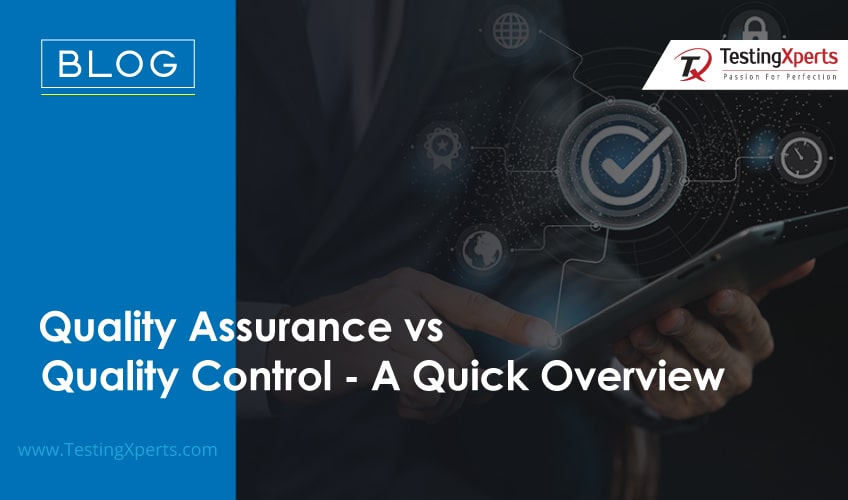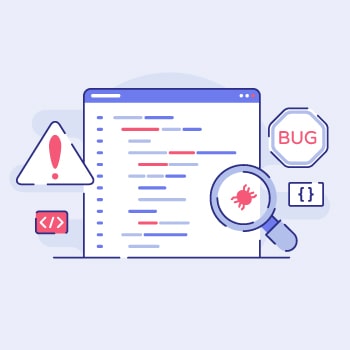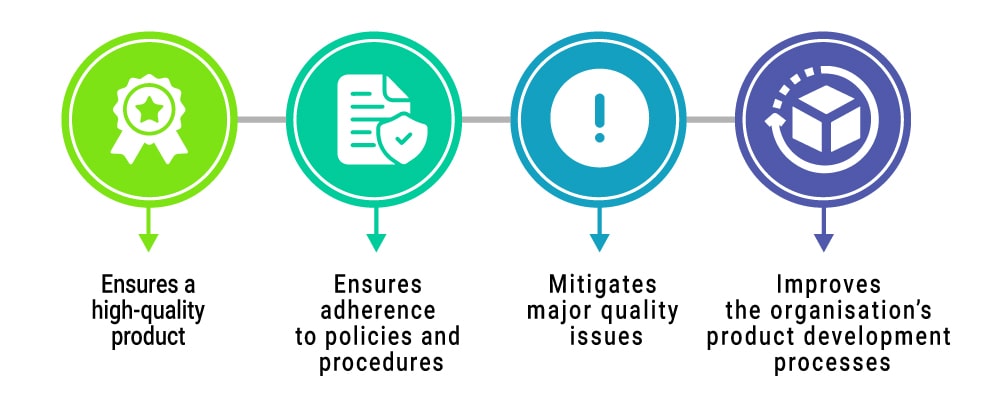
Digital businesses must deliver exceptional customer experiences that ensure user retention, customer loyalty and a relentless revenue stream. While the stakes are high and businesses compete aggressively to achieve digital transformation, quality remains at the focal point.
Quality assurance (QA) vs quality control (QC) are two key aspects of product or service quality management. There is no denying of the fact that some quality assurance and quality control activities may be interrelated, but the two processes differ. When comparing quality assurance vs quality control, both processes share similar objectives but employ different strategies to ensure customers in the UK receive finished products of the highest quality.
Quality assurance vs quality control

What is Quality assurance?
Quality assurance defined as a quality management initiative aiming to provide confidence that an application’s digital quality requirements will be fulfilled. Quality assurance is twofold—internally to the stakeholders and externally to the final users, regulatory authorities and third parties.
An overview of QA processes

QA involves activities and procedures performed during the software development life cycle that help ensure a high-quality application release. QA includes members across departments discussing, planning and executing tests to validate product quality.
A QA process deals with the following aspects:
• Requirement gathering, designing and prototyping
• Programming and code reviews
• Creation of version control
• Continuous integration/continuous delivery (CI/CD)
• Configuration management
• Test planning and execution
• Release management
• Deployment and integration
• Customer acceptance and feedback
What is Quality control?
Quality control is defined as a quality management process aiming to fulfil an application’s quality requirements or service. While quality assurance deals with how processes and procedures are performed, or an application is created, quality control can be termed as the ‘inspection’ aspect of quality management system.
An overview of QC processes

In QC, it is ensured that the developed application meets the organisation’s quality standards. Defects in an application, such as UI bugs, design glitches, accessibility issues or security flaws, can cause irreparable damage to both the end users as well as the product businesses.
A QC process deals with the following aspects:
• Identifying application errors
• Verifying predefined quality requirements are met
• Ensuring conformance with industry compliances and regulations
• Creating and maintaining quality reports
• Determining features where UX could be uplifted
Quality control vs Quality assurance: The similarities

Ensures a high-quality product:
A business can’t simply release a product and hope for the best. QA helps digital organizations plan how they will approach product quality. QC activities helps ensure digital quality businesses that the finished products meet expectations. QC and QA play vital roles in delivering top-quality services and products to customers and securing revenue for the business.
Ensures adherence to policies and procedures:
While QA is more process-oriented than QC, both approaches follow standards set by the organisation for securing high quality. QC might involve some exploratory or UX testing that demands a certain level of creativity on the tester’s part. However, defect detection and remediation must still be recorded and executed systematically.
Mitigates major quality issues:
Defects may be in the form of minor inconveniences or highly escalated disruptions. The earlier such defects are identified, the more cost-effective and easier it is to fix the issue. The risk increases exponentially as defects move closer to the customers’ hands. QC and QA aim to achieve reduced time and cost to market for digital businesses. The former helps to establish processes for early detection, and the latter helps businesses fix as many errors as possible in the application.
Improves the organisation’s product development processes:
Feedback loops are a familiar idea for developers. Organisations focused on processes of QA and QC follow a continuous learning path and eventually become more efficient and effective with each product release. QC and QA enable digital businesses to understand where they may improve in critical areas of planning, automation, bug detection, etc., to enable a great CX.
What is the Difference Between Quality Assurance and Quality Control

| Heading | Quality Assurance (QA) | Quality Control (QC) |
| 1. Proactive (QA) vs. Reactive (QC) | Efficient quality assurance takes a proactive stance, striving to preempt defects by designing processes that minimize their occurrence. Quality assurance encompasses process design activities, including the creation of standardized operating procedures (SOPs) adhering to ISO 9000 standards. The ultimate outcome of diligently following these processes should consistently yield safe and efficient products. | Quality control (QC) operates reactively, with its purpose centered on detecting product quality defects after they have occurred. Quality control (QC) encompasses the assessment of products to verify their alignment with safety and efficacy standards. In instances where QC testing identifies quality concerns, responsive measures should be taken to avert the distribution and shipment of potentially unsafe products. |
| 2. Process Oriented (QA) vs. Product oriented (QC) | Quality assurance (QA) revolves around processes and is centered on preventing quality-related challenges. Quality assurance entails the activities that contribute to the product’s creation. QA Processes involve:
|
Quality Control (QC) is product-oriented and focused on recognizing quality issues in manufactured products that could affect customer satisfaction. It pays attention to the resulting product. QC procedures involve:
|
| 3. Creation (QA) vs. Verification (QC) | QA efforts yield a blueprint for crafting top-notch products, encompassing the establishment of benchmarks spanning product design, manufacturing, packaging, distribution, marketing, and sales. | QC pertains to the post-manufacturing stage, verifying products before distribution to ensure their safety and effectiveness. |
| 4. System (QA) vs. Parts (QC) | Quality assurance control systems are the methods and procedures which are used to safeguard quality standards. The QA system for digital quality management may dictate various activities to make sure inputs are consistently safe and effective, such as auditing suppliers and batch sampling raw materials. | Quality control systems measure parts, including the outputs of the system. QC efforts may also be focused on parts used to create the final product, such as raw materials from a supplier. |
| 5. Entire Team (QA) vs. Dedicated Personnel (QC) | The scope of quality assurance activities extends across the entire team. In a life sciences organization, every member plays a role in QA activities by adhering to established standard operating procedures (SOPs). While the responsibility of the quality management system (QMS) typically rests with the quality unit and leadership team, QA activities encompass guidelines for training, documentation, and evaluation that apply to the entire workforce. | Quality control (QC) typically falls under the purview of specific personnel within the organization, tasked with executing product testing in accordance with established standard operating procedures (SOPs). QC professionals adhere to SOPs governing quality control processes and meticulously record their observations, adhering to standardized procedures for both product testing and process validation. |
Conclusion
Quality control and quality assurance are essential for delivering high-quality applications and services in the UK. While quality assurance focuses on preventing defects and ensuring overall product quality, quality control detects and fixes defects. Both processes are integral to effective quality management.
How can Testingxperts help Quality Assurance Services?

TestingXperts (Tx) is one of the five largest global pure-play software testing services providers. Tx has been chosen as a trusted QA partner by Fortune clients and ensures superior testing outcomes for its global clientele. We have rich expertise in enabling end-to-end testing services for global clients across various industry domains like healthcare, telecom, BFSI, retail & eCommerce, etc.
Our wide range of QA testing services in the United Kingdom includes:
Test Advisory:
TestingXperts’ Test Advisory Services provide specialist advice to help achieve overall product quality, reduced release cycle time, faster time-to-market, and significant reductions in QA costs.
DevOps Consulting Services:
Our DevOps experts will analyse business needs and help achieve a strategic DevOps adoption roadmap. Our wide range of DevOps services like DevOps consulting, DevOps CI/CD implementation, Enterprise DevOps Transformation, IAC consulting and Implementation, and Test Automation in DevOps will help achieve faster and quality releases.
Test Automation:
Our in-house test automation experts have rich expertise in industry-leading test automation tools. Our end-to-end test automation services help businesses reduce regression time and cost.
Functional Testing:
Tx has years of experience providing functional testing services for clients across domains. Our range of functional testing services includes automation, manual, regression, and mobile application testing. We have in-house mobile test labs with numerous mobile devices.
Non-Functional Testing:
Tx provides a wide range of non-functional testing services such as performance and load testing, security testing, usability testing, and accessibility testing. We also have an in-house performance testing accelerator, ‘Tx-PEARS,’ which helps with all non-functional testing requirements, including continuous monitoring of your infrastructure in production and lower environments.
Next-gen Testing:
Our wide range of next-gen testing services includes AI testing, RPA testing using UiPath Test Suite, Digital testing, IoT testing, etc.
Discover more
Get in Touch
Stay Updated
Subscribe for more info




